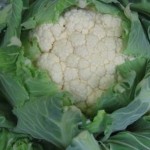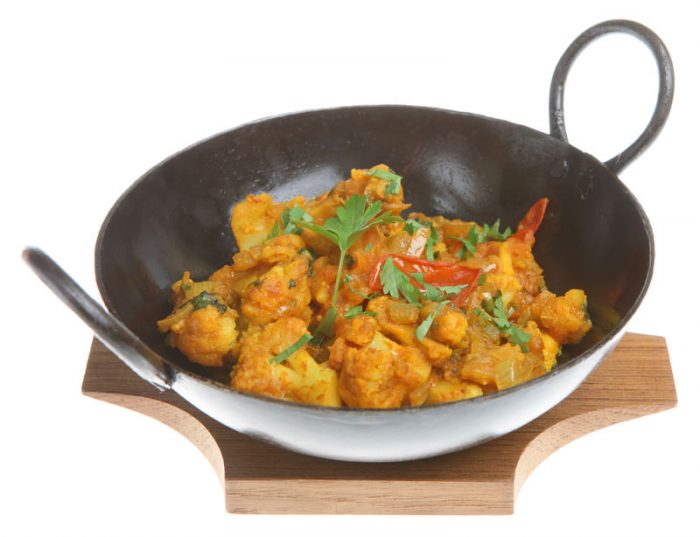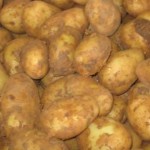Cauliflower is a vegetable in the Brassica oleracea species, which includes cabbage, broccoli and kale. Most of the Cauliflower vegetable is edible, but most people just prefer the head which is formed of flower stalks. The head of a cauliflower is usually white but can also come in purple and green as well.
Cauliflower is a very versatile vegetable and can be roasted, mashed, stewed, stir-fried or boiled, used in soups, or gratins or eaten raw.
Skills Check
Follow a recipe; follow food safety & hygiene rules; tidy away; use measuring spoons and cups; chop using bridge/claw technique; snip herbs with scissors; crush garlic; use the hob (with adult supervision).
Equipment
Knife, chopping board, large saucepan, wooden spoon, measuring spoons, jug, whisk, bowl.
Ingredients (serves 6):
- 1 cauliflower, broken into large florets
- 2 tbsp olive oil
- 2 small onions, peeled, halved and finely sliced
- 3 cloves of garlic
- 1 green chilli, de-seeded and chopped
- 3cm piece of fresh ginger, peeled and grated
- 1 tsp garam masala
- 1/2 tsp mustard seeds
- 1/2 tsp ground cumin
- 1/4 tsp turmeric
- 3 cardamom pods, bashed
- 350g small potatoes, quartered
- 250g natural whole yogurt
- 1.5 tbsp tomato puree
- 1 small handful fresh coriander
Method
- Heat the oil in a large saucepan over a medium heat and fry the onion until just golden. While the onion is cooking pound the garlic, chilli and ginger with a pinch of salt until they form a paste.
- Tip in the rest of the spices and stir until the mustard seeds start to pop. Add the potatoes and cauliflower, and fry, stirring frequently, for five minutes, so that the vegetables are well coated with the spice mixture.
- Pour in 400ml of water, bring to a simmer, cover and cook for 10-12 minutes, until the vegetables are tender.
- In a bowl whisk together the yogurt, tomato puree and some of the hot cooking liquid. Remove the curry from the heat, stir in the yogurt mixture, return the pan to the heat and warm through gently. Stir in most of the coriander, add pepper to taste, and serve scattered with the remaining coriander.
So thinking about quick cauli-curry ...

Potatoes are a nutritious and filling starchy food; low in fat and a source of vitamin C and fibre.
Nutritional Information
| - | Energy | 607kJ / 144kcal | 7% |
| Low | Fat | 2.2g | 3% |
| Low | Saturates | 1g | 5% |
| Low | Sugars | 9.3g | 10% |
| Low | Salt | 0.2g | 4% |
per 200g serving
% of an adult's reference intake
Typical values per 100g: Energy 302kJ / 72kcal
Notes
A traffic light system is used on nutrition labels to make it easier to see which foods and drinks are lower in calories, fat, sugar and salt. Try and choose more ‘greens’ and ‘ambers’ and fewer ‘reds’, and stick to smaller portions of ‘reds’.
Just because a recipe or a food has a red traffic light doesn’t mean you shouldn’t eat it. Understanding why a food or recipe might have a red light can be helpful. For example oily fish is high in total fat and so any recipe containing oily fish is likely to be ‘red’ for fat. But it is recommended that we eat oily fish at least once a week because the type of fat it contains is beneficial for our health.
% Reference Intakes are also shown. Reference Intakes are guidelines about the approximate amount of particular nutrients and energy required for a healthy diet (based on an average-sized woman doing an average amount of physical activity). Most children will require less than these Reference Intakes. The contribution of one serving of a food or drink to the Reference Intake for each nutrient is expressed as a percentage.




